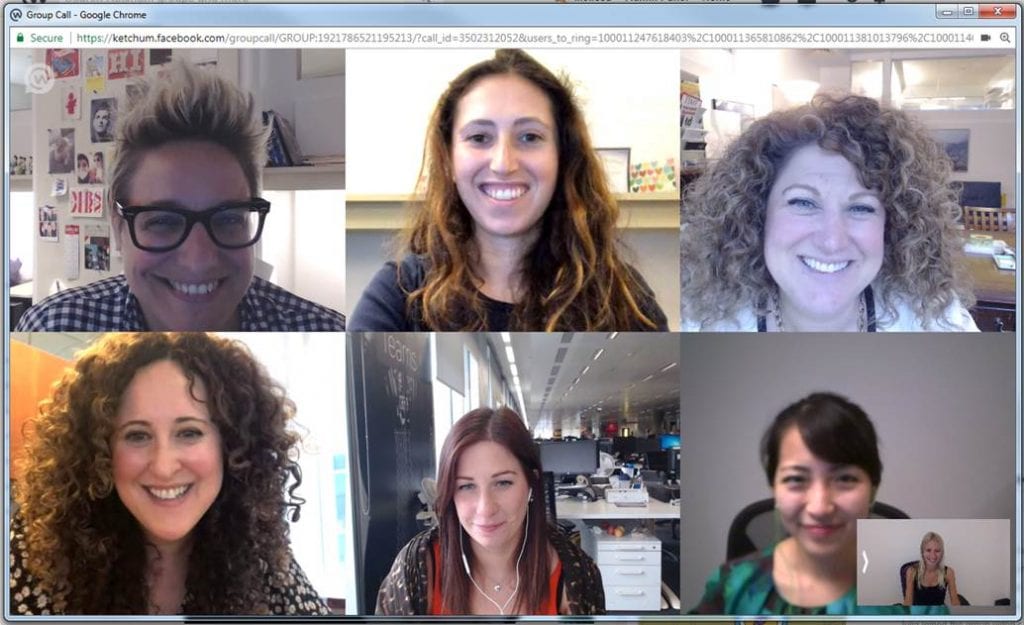The virtual office isn’t a place; it’s a state of mind.
Our Organizational Effectiveness and Learning & Development team sits in three different locations in three different time zones. So, how do we work together successfully? How do we share ideas across oceans? And how do we form the same bond that face-to-face teams value so much?
We work hard at it. Being in a virtual team forces you to rely on technology and experimentation. You have to be open-minded and try new things. Recently, we ran an entire planning meeting and brainstorm using a combination of conference call and Workplace by Facebook chat.

Here are a few of the guiding principles that work for us:
Respect:
Our primary tool is live video. Both via Adobe and Workplace video call we can talk to each other AND see each other. I realize this isn’t exactly the same as being in the same office, but those who sit in the same office join a team call from their own desks on their own webcams rather than congregating in a room together to only have one lone team member on a speaker phone in the middle. It’s little things like that, which lead to mutual respect among all team members and, inevitably, make all the difference in team continuity.
Teamwork:
Our Workplace group is one of the most active across the network – every day we use the platform to collaborate through editing documents, brainstorming, polling and providing feedback and photos from trainings. We also have fun sharing commuter stories, lunch pictures, GIF competitions and share recent successes we’ve had. Collaboration is our buzzword – teamwork makes the dream work is our mantra; even with 20 percent of the Earth’s surface between us.
Trust:
I’ll often “pop in” to my colleague’s office by calling them on video chat or shoot a quick note on Workplace messenger to ask a question. Most of the time, it’s an instant reply or, if not, I can see they haven’t read it and must be busy. By talking most days (if not every), we develop trust and remove any distance bias (the notion that one only thinks of people in close proximity when assigning a project).
Flexibility:
How do we deal with the time difference, you ask? Easy. We schedule our meetings during mornings in New York, as Europe is right in the middle of the afternoon. We respect each other’s hours and know that if someone’s logged off, they’ll pick it up when they’re back on.
There you have it! Respect, teamwork, trust, and flexibility are the keys to running successful virtual teams.
If you’d like to know more about how your company or team can get started, and have success, working remotely, please email me here or leave a comment below!


